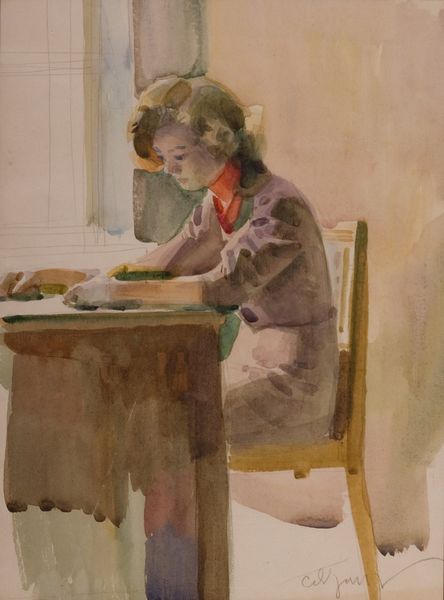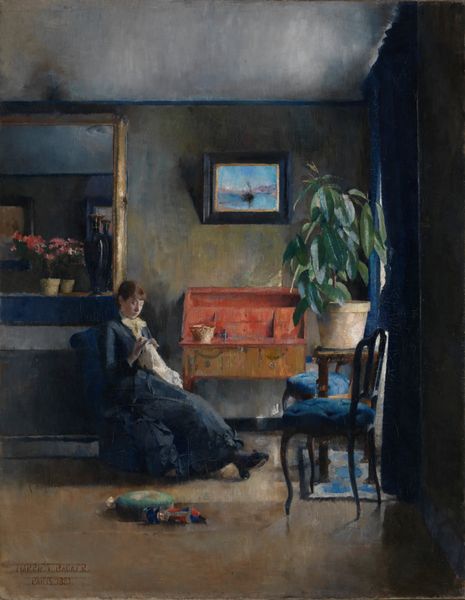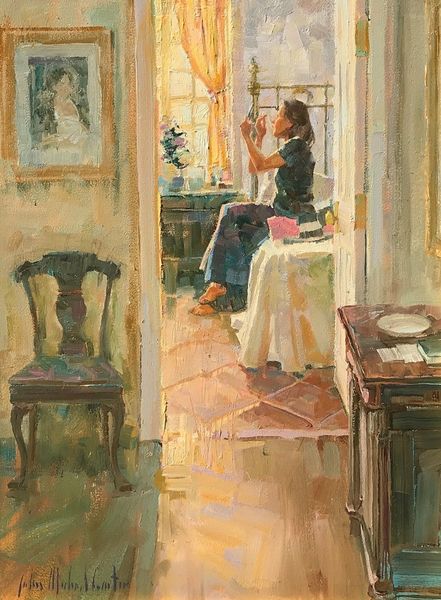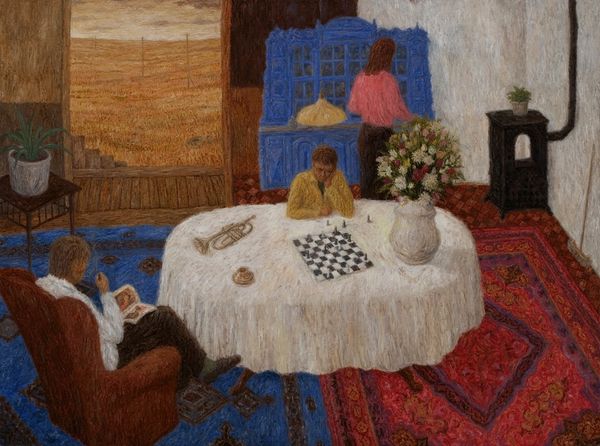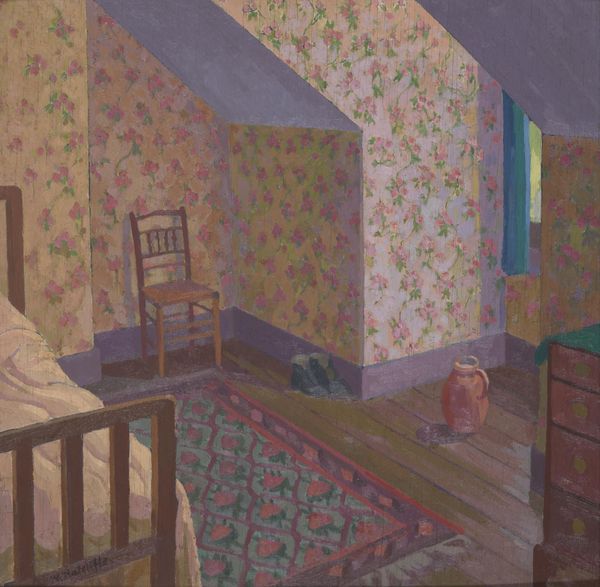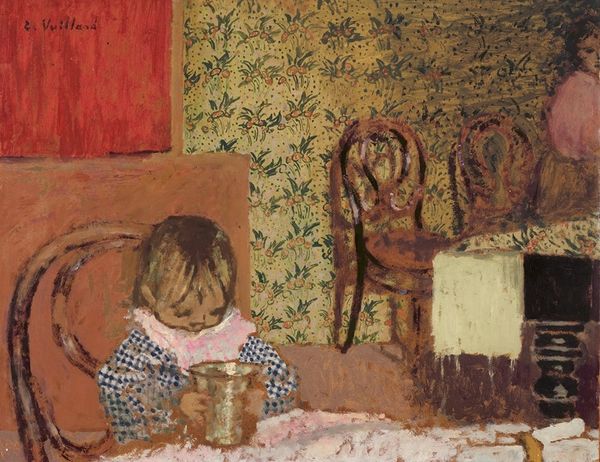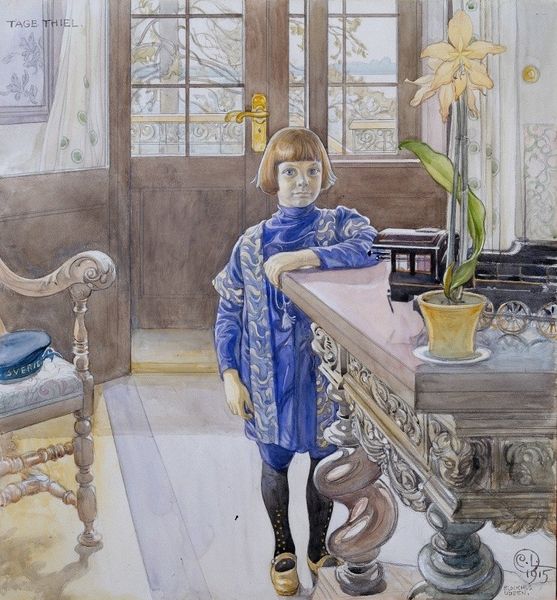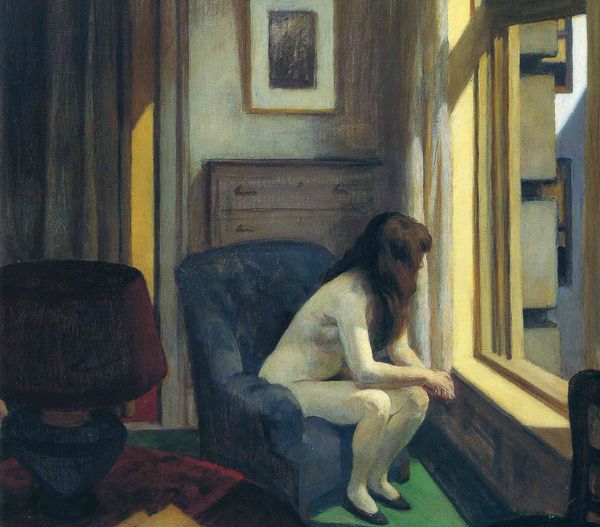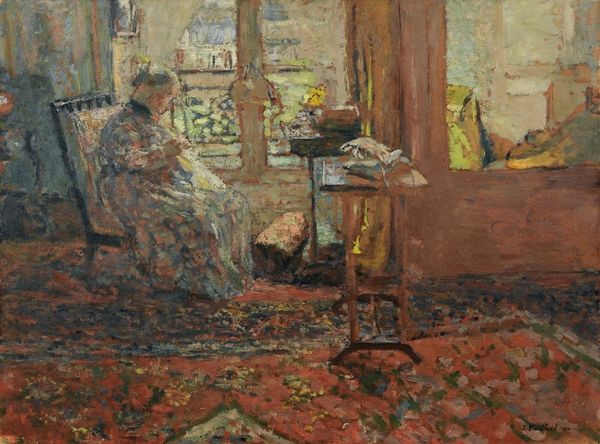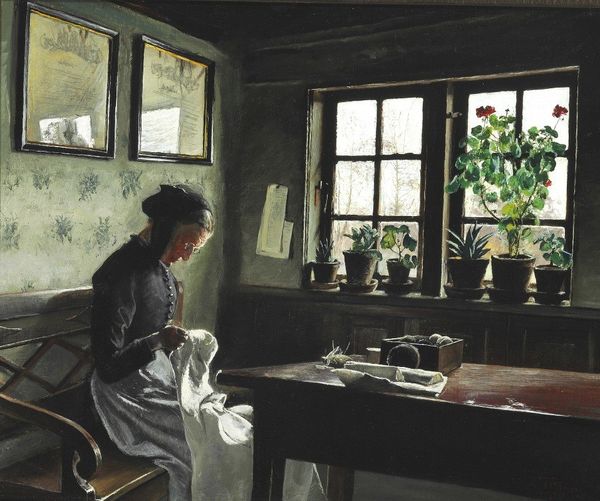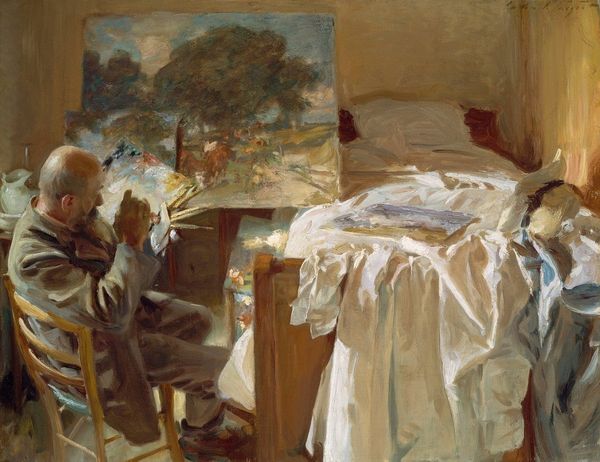
painting, oil-paint
#
portrait
#
painting
#
oil-paint
#
figuration
#
social-realism
#
oil painting
#
genre-painting
#
realism
Copyright: Modern Artists: Artvee
Curator: Norman Rockwell’s “The Babysitter,” completed in 1947, greets us today. He employed oil paint to craft this intriguing narrative scene. Editor: My immediate sense is one of serene focus, almost domestic containment, yet there’s something subtly off-kilter in the composition. The strong verticality created by the doorframe pulls my focus, while the off-center arrangement imbues a degree of narrative tension. Curator: Indeed. Let's consider the materiality. Rockwell, deeply influenced by developments in American illustration, presents us with an accessible, detailed portrayal of postwar life. The choice of oil paint, in this case, would have allowed a richness of texture and depth crucial to portraying fabric and furniture. This image was disseminated broadly through prints in publications like the Saturday Evening Post and therefore exists in that expanded socio-economic network of production, consumption, and popular American iconography. Editor: You're right about its broader context. Looking closely, note the symbolism embedded within. The casually discarded pencil on the floor—a fleeting interruption, and then there's the carefully tacked note under the lampshade, seemingly a reminder list for this young girl in her new caregiving role. Curator: Consider, too, how this painting captures the gendered division of labor—even childhood labor, through that task of caregiving. It subtly critiques social expectations in how resources for labor or tools like pens, books or lamps are provided, used, and represented here, revealing subtle commentaries on economic realities through objects. Editor: I see your point, it's more layered than just sentimental nostalgia. And this focus is emphasized with the almost hidden details, the small drawing in the picture frame hanging in the background is dwarfed next to that utilitarian note near the light. The viewer's gaze bounces between personal aspirations and the everyday job at hand, underscoring the push-and-pull between dream and duty in post-war American life. Curator: Rockwell, regardless of your initial, nostalgic reading, presents his viewers, then and now, an artwork filled with multiple levels of interpretations and material analysis, demonstrating how images function within production and consumption networks. Editor: Well, that interplay between everyday realism and embedded meaning gives the work a compelling power beyond initial appearances. It's the sort of visual storytelling that resonates across time, isn't it?
Comments
No comments
Be the first to comment and join the conversation on the ultimate creative platform.
